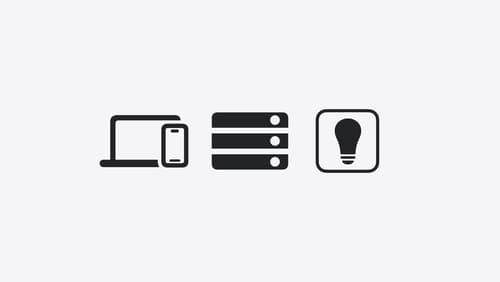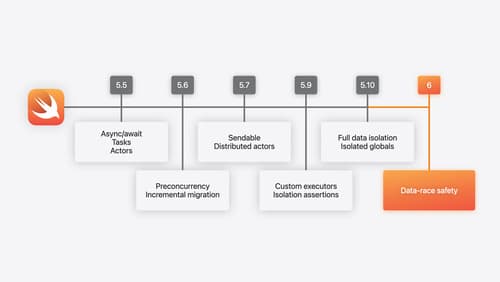How can I professionally convert to a Swift developer?
Asked on 2024-07-23
1 search
To professionally convert to a Swift developer, you can follow these steps based on the content presented at WWDC:
-
Learn Swift Basics: Start by familiarizing yourself with the core features and design principles of Swift. You can watch the session A Swift Tour: Explore Swift’s features and design to get an overview of Swift's syntax, performance, and safety features.
-
Understand Swift's Evolution: Gain insights into how Swift has evolved over the years and its current capabilities. The session What’s new in Swift provides a comprehensive history and the latest updates in Swift, including new language features and improvements.
-
Use Xcode: Xcode is the primary IDE for Swift development on Apple platforms. The session Platforms State of the Union mentions the latest updates in Xcode, including predictive completion and Swift assist, which can enhance your development experience.
-
Explore SwiftUI: SwiftUI is a powerful framework for building user interfaces across all Apple devices. The session Platforms State of the Union highlights the benefits of using SwiftUI for app development, including its ease of learning and advanced features.
-
Cross-Platform Development: Swift is not limited to Apple platforms. It is also supported on Linux and Windows, and there are community efforts to bring it to other platforms like WebAssembly. The session What’s new in Swift discusses Swift's cross-platform capabilities and tools like SourceKit LSP for integrating Swift support into various IDEs and editors.
-
Concurrency and Safety: Understanding Swift's concurrency model and safety features is crucial for writing robust and efficient code. The session What’s new in Swift covers the concurrency model, including async/await and actors, which are essential for modern Swift development.
-
Join the Community: Engage with the Swift community to stay updated and get support. The session What’s new in Swift talks about the community-driven evolution process and how you can contribute to and benefit from the Swift ecosystem.
By following these steps and leveraging the resources provided in the WWDC sessions, you can effectively transition to a professional Swift developer.

Platforms State of the Union
Discover the newest advancements on Apple platforms.

A Swift Tour: Explore Swift’s features and design
Learn the essential features and design philosophy of the Swift programming language. We’ll explore how to model data, handle errors, use protocols, write concurrent code, and more while building up a Swift package that has a library, an HTTP server, and a command line client. Whether you’re just beginning your Swift journey or have been with us from the start, this talk will help you get the most out of the language.

What’s new in Swift
Join us for an update on Swift. We’ll briefly go through a history of Swift over the past decade, and show you how the community has grown through workgroups, expanded the package ecosystem, and increased platform support. We’ll introduce you to a new language mode that achieves data-race safety by default, and a language subset that lets you run Swift on highly constrained systems. We’ll also explore some language updates including noncopyable types, typed throws, and improved C++ interoperability.
